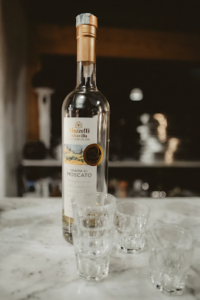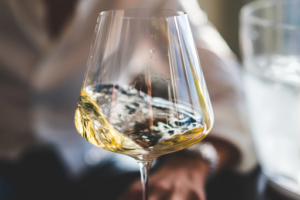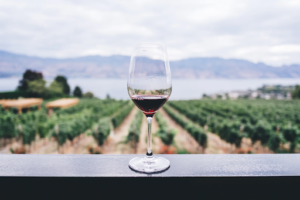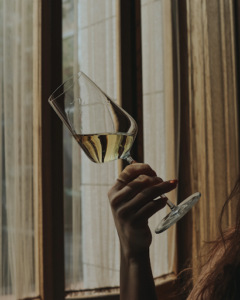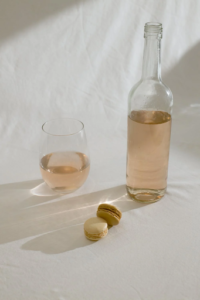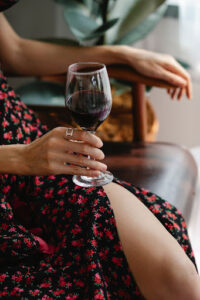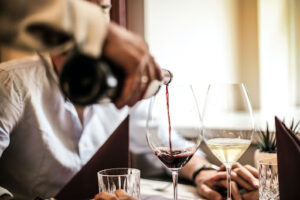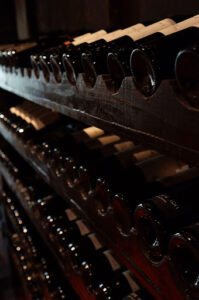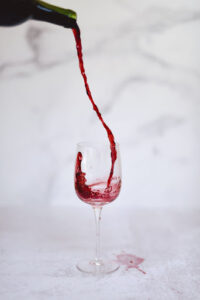
Waking up and the realization hits: you said one too many embarrassing comments last night as you freely drank your hefty glasses of wine. The pounding headache sets in, and quickly it’s decided this morning will be filled with Advil and movies in a very dark room. Rolling over in bed, you wonder, how much wine did I drink?
When sipping on glasses of wine throughout the evening, it can be easy to lose count. The smooth flavor masks the alcohol taste, and the effects might not be noticed until it’s too late. Nobody likes a terrible hangover, so finding out your limit is crucial to avoiding the sluggish morning after and the embarrassing reality of what happened the night before. Knowing just how many glasses of wine to get drunk is the perfect solution to establishing your wine limit.
Let’s take a look at a few deciding factors that determine how much wine will get you drunk below!
The Alcohol Content in Wine
The alcohol content in wine is represented by ‘ABV’, or alcohol by volume. It measures the amount of alcohol in the given volume of the drink.
The ABV can vary depending on the wine type and can affect the taste considerably. We can easily put different wines into categories based on their low or high ABV levels. Knowing this information informs you that not all glasses of wine are created equal.
Low-Level Alcohol Wines (12.5%)
These wines are the lightest and include types like:
- Prosecco
- White Zinfandel
- Muscadet
Moderate Level Alcohol Wines (12.5%-13.5%)
As you move up the scale you’ll notice a bit bolder flavors, higher price points than the low ABV.
- Chardonnay
- Merlot
- Sauvignon Blanc
- Riesling
Medium/High-Level Alcohol Wines (14.5% and up)
Boasting the highest alcohol content, these wines are the booziest of the bunch. Plus, most of these are fortified wines, which is an addition of distilled spirits.
- Cabernet Sauvignon
- Australian Shiraz
- California Syrah
How Many Glasses of Wine to Get Drunk: Tolerance Factors
Everyone has a different tolerance than one another based on their sex, body weight, and age. If you consume wine daily, your tolerance is likely much higher than someone who never drinks it. Keep in mind eating food helps slow down the absorption of alcohol by coating the stomach lining.
Sex
Simply based on science, females tend to be smaller than males and hold onto more fat. Additionally, men hold on to 10% more water than women and can break down the alcohol content much faster than females, removing the drunkenness factor.
Weight
A person’s body greatly impacts the amount they can drink. Someone with a bigger body can consume more alcohol before getting drunk due to a greater amount of blood in their system. Looking at the Blood Alcohol Content (BAC) chart, it illustrates that someone under 100 lbs. can drink 1 glass and be considered legally drunk, whereas someone who weighs 250 lbs. can have 3 glasses and reach the same limit.
| Glasses of Wine | 100 lbs. | 150 lbs. | 200 lbs. | 250 lbs. |
| 1 | 0.08 | 0.06 | 0.04 | 0.03 |
| 2 | 0.16 | 0.12 | 0.08 | 0.06 |
| 3 | 0.24 | 0.18 | 0.12 | 0.09 |
| 4 | 0.32 | 0.26 | 0.16 | 0.10 |
| 5 | 0.40 | 0.32 | 0.20 | 0.13 |
| 6 | 0.48 | 0.38 | 0.24 | 0.16 |
| 7 | 0.56 | 0.44 | 0.28 | 0.19 |
| 8 | 0.64 | 0.50 | 0.32 | 0.22 |
| 9 | 0.72 | 0.53 | 0.36 | 0.25 |
| 10 | 0.80 | 0.59 | 0.40 | 0.28 |
Age
Your tolerance improves the more you drink and the older you become. An individual who has never drank before will get intoxicated much quicker from less alcohol than someone who regularly consumes alcohol.
Mixing Alcohol Types
Mixing your drinks throughout the night can lead to a worse case of drunkenness than sticking to wine or one drink. It can increase stomach irritation and leads to confusion about how much alcohol you have ingested. Since it makes it more difficult to track how much you have had to drink, it has negative effects.

How Many Glasses of Wine to Get Drunk: Avoid The Nasty Hangover
After covering some contributing factors that lead to a drunken night, we can quickly establish what to do to minimize the chances of waking up hungover.
Learn Your Tolerance
By experimentation, we can develop a clear understanding of what our bodies can and cannot handle. Picking a safe place, such as your home, to test it out is the best option. Letting a close friend or family know to keep an eye on you is also a smart suggestion throughout the process.
- Pour a couple of glasses of wine and sip on them for over an hour.
- When you start to feel the effects of being tipsy, such as euphoric or dizzy, keep note of it.
- If you have not experienced these symptoms yet, have a third glass until you feel the effects.
- Take note of how many glasses you consumed—this is your tolerance level!
Drink Wine with a Lower ABV
Having a few glasses of wine with a lower ABV can slow down the process of getting drunk. These lighter and fruitier options of wine are perfect for newbie wine drinkers. With a lower ABV, keep in mind the serving size you are pouring. Lucky for you, a larger pour is not going to leave you inebriated.
Opt for these types to have a more enjoyable time and something you can sip on all night long without fear of a hangover! A few wine tips and tricks up your sleeve will come in handy to avoid making a fool of yourself.
Eat a Full Meal
Eating a hearty meal before a night out and staying hydrated is a game changer when it comes to tolerating alcohol. Food lines your stomach and dilutes the alcohol in wine, making it easier to digest and helping you stay sober longer. Drinking glasses of water during the night can additionally aid your metabolism by breaking down alcohol faster.
So, How Many Glasses of Wine Does it Take to Get Drunk?
The fact of the matter is – it depends. All of these deciding factors contribute to establishing your limit. But, it is always helpful to remember the famous phrase ‘everything in moderation’. It comes into play very well when drinking wine. Wine is delicious until it becomes our worst enemy the morning after.
If you follow this guide, there is no doubt you can avoid intoxication, providing a much more enjoyable time out with friends and family!


